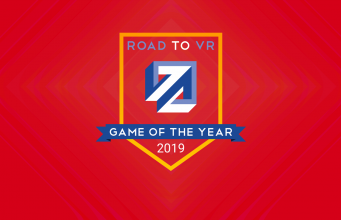
Every year is the biggest year for virtual reality. It seems more developers are delving into VR to explore the medium, hone their techniques and find out what works and what doesn’t. Virtual reality fans walk a similar path; every achievement in this burgeoning medium sets a new bar, and a new expectation of something greater as a result.
Now, a little under four years since the big names in hardware released their first generation consumer headsets, we live in a time when a number of VR games have actually approached the best that any gaming platform has to offer. And although this next decade is slated to include big titles from established studios, next-gen hardware built by the biggest in manufacturing, and experiences that teeter on complete photorealism, it’s these formative steps that are defining what’s fun, meaningful, and technically possible.
In our third annual Game of the Year Awards, we again celebrate those VR games—those stories that can only be told through the act of suspending your disbelief and immersing yourself in another world, head-first.
Without further ado, Road to VR’s 2019 Game of the Year Award winners:
Asgard’s Wrath
Developer: Sanzaru Games
Available On: Oculus (Rift)
Release Date: October 10th, 2019
Sanzaru Games and Oculus Studios brought Asgard’s Wrath to life as a part of the Oculus initiative to fund less, but bigger titles for the Rift platform. And outside of some PC-to-VR ports, it doesn’t get bigger than this melee-focused action RPG, which puts you squarely in a world that’s surprisingly alive, and boasts a depth in gameplay and visuals that make it truly something to behold. There’s little filler in the 30+ hour adventure, but even if you go for the meatiest bits, you’re looking at very least a hearty helping of gameplay that should last you well into the double digits.
While this Norse-inspired adventure doesn’t occupy an open world, it feels impressively large in scope as you traverse the game’s many layers, including moments when you need to either be god-sized or mortal-sized to solve puzzles and engage in epic combat, and when you have to control your chimeric animal pals to act as both keys to specific puzzles or order around as essential combat partners.
The game’s gestural-based combat takes some time to massage into muscle memory, but once you get down the basic moves of parrying, blocking, and countering, the game really starts to take flight. And when you begin matching those moves with more difficult enemies, many of which have their own combat styles, you’ll quickly learn that Asgard’s Wrath demands nothing short of precision (i.e. no wildly waggling your controller).
How much you like the puzzles or combat is basically subjective, but one thing that’s positively undeniable is the game’s visual finesse. Although object interaction wasn’t notable, Sanzaru expertly showcases its attention to detail as one of the key pillars of immersion. Textures, character animations, level design, all of these things are impressively realized, making it one of those games that begs for your attention long after you complete its twisty-turny story.
Pistol Whip
Developer: Cloudhead Games
Available On: Steam (Index, Vive, Rift, WMR), Viveport, Oculus (Rift, Quest)
Release Date: November 7th, 2019
Wary of other rhythm games in the wake of Beat Saber (2018) hype? You shouldn’t be, as Cloudhead Games thrusts into the genre with its addictive and mightily impressive title Pistol Whip.
Pistol Whip successfully marries rhythm and shooting, and gets mega style points in the process, as it draws on things like the John Wick film series and Equilibrium (2002) for inspiration. You might also describe it as a fun mashup between Superhot VR (2017), Beat Saber, and Smash Hit (2015).
Like any good arcade game, cognitive load is high in Pistol Whip. You’re tasked with returning fire and dodging incoming bullets from scores of enemies—approaching the sort of flow state you achieve in a bullet hell game, except you’re using your whole upper body to physically flow to the beat. Its bass-heavy music goes particularly well with the punchy tones of your gunshots.
The more you fire on-beat, the more points you get, forcing you to not only shoot accurately, but to feel the music and really immerse yourself in the cool, stylized world. The song library is still a little on the low side, but it doesn’t stop the game’s replayability from being both extremely high and ultimately super satisfying.
Blood & Truth
Developer: PlayStation London Studio
Available On: PlayStation (PSVR)
Release Date: March 28th, 2019
PlayStation London Studio heard loud and clear from players of PlayStation VR Worlds (2016), the studio’s PSVR launch title, that VR needed more of the narrative-driven action teased by the ‘London Heist’ mini-game. And in Blood & Truth, the studio delivered, full stop.
Blood & Truth is the fully fleshed out vision that ‘London Heist’ deserved. Set in the midst of two warring crime families, the game takes players on an action-packed journey with strong gun and shooting mechanics, richly detailed environments, and action set pieces made to make you feel like you’re the star of your own action movie. With a smart approach to locomotion (which lets players focus on the fun) and thoughtful details (like the ability to twirl pistols around your finger for extra flair) the game manages to hit a consistently satisfying note throughout.
We also really enjoyed the scene where the player sneaks into a modern art museum, which London Studio used as a genius way to pepper the game with some rather unique VR moments that otherwise would have lacked context.
Blood & Truth is an impressively crafted experience that is not only expertly designed around the limitations of the aging PSVR, but even manages to raise the technical bar for character rendering and performances on any VR platform even against much more powerful PC hardware.
Star Wars: Vader Immortal – Episode I
Developer: ILMxLab
Available On: Oculus (Quest, Rift)
Release Date: May 21, 2019
Note: VR games which were available on other VR platforms in previous years were not considered for our Quest Game of the Year award.
From the earliest days of VR you can people talking about how cool it would be to wield a lightsaber. And as VR matured over the years that talk slowly moved toward wanting a full-blown VR game in the Star War universe. There were teases… oh there were teases. ILMxLab itself put out the 10 minute Trials on Tatooine back in 2016, but it only made one thing clear: this wasn’t enough.
That project, along with other pioneering VR work by ILMxLab, like Star Wars: Secrets of the Empire at The VOID, finally culminated in Star Wars: Vader Immortal – Episode I, the first of a three-part narrative adventure on Oculus Quest.
Not only is Vader Immortal – Episode I (and the two following episodes) likely the most successful fusion to date of consumer VR and one of the worlds biggest media franchises, it’s also a stunning proof that you don’t need high-end computing power for an engaging and immersive experience.
For players taking their first steps into VR with Quest, Vader Immortal – Episode I is an ideal opening act that strikes a great balance between narrative and gameplay. Though this singular episode doesn’t run very long, it takes players on a thoughtfully crafted journey that sells the feeling of actually being part of the Star Wars story.
And for the more hardcore gamers that can’t quite get enough Vader Immortal – Episode I‘s ‘lightsaber dojo’ offers up wave-based combat which is challenging and engaging enough to easily triple the time spend in the campaign portion of the game. And as the first part of a trilogy, Episode II & Episode III are already available for players to continue the story.
Design Awards
Five Nights at Freddy’s VR: Help Wanted
Developer: Steel Wool Studios
Available On: Steam (Vive, Rift, Index, Windows VR), Oculus (Rift), PlayStation (PSVR)
Release Date: May 28th, 2019
Five Nights at Freddy’s took the Internet by storm back in 2014 with its memorable jump scares and bizarre re-imagining of the Chuck E. Cheese restaurant/arcade attraction. Now, Steel Wool Studios has rebuilt the game from the ground-up as a Freddy Fazbear-brand VR experience, which includes a number of minigames in addition to the good ol’ classic task of evading the deadly animatronics from your curiously unsafe control room.
Object interaction is well designed in Five Nights at Freddy’s VR, which helps ground you in the world, and it’s really well polished on the graphical side as well. One big part of what makes FNAF VR great though is sound design, as you’re forced to not only look at the CRT monitors to see where each of the monstrous creations could be lurking, but you also have to listen for them clanking around. Ambient noises such as spinning fans and flickering lights really crank up the fear factor as you frantically pick apart what’s an important sound and what’s simply background filler. The lack of sound is even worse, as any FNAF fan can attest to.
Taking a big screaming Freddy to your face when you eventually fail to correctly manage resources is about 100 times scarier in VR; you simply can’t look away. You’d be forgiven if you’d rather watch someone else play from the comfort of your couch and a security blanket than actually dive in head-first based on how immersive and scary Five Nights at Freddy’s VR truly is.
Stormland
Developer: Insomniac Games
Available On: Oculus (Rift)
Release Date: November 14th, 2019
Stormland, like most great VR games, is very much designed around its locomotion. While all too many VR games have players slowly (and boorishly) walking from A to B, Stormland makes moving around part of the game’s core fun.
This is achieved first with an expansive world. The game is set in a world where floating islands jet out of a sea of clouds. The disparate islands are a marvel to look at as the sun strikes them just right, and knowing that they are real places that you can actually travel to makes them that much more alluring.
Second, Stormland makes its movement between important gameplay spaces fun by making it interesting and different from the typical locomotion. When you set foot onto the cloud sea, you immediately kick into speedy slipstream which has you jetting around at high speeds. While we’d normally expect this kind of quick movement in VR could make players dizzy, developer Insomniac Games realized that trying fast locomotion to broad body movements goes a long way to helping players remain comfortable. And so when you slipstream along the clouds, you keep your arms pointed outward in a superman pose and steer based on the direction they face.
Third, Stormland mixes and mashes locomotion schemes to give players freedom. Slipstreaming gets you from island to island quickly, but what do you do when you get there and find that the precipice is hundreds of feet overhead? Nearly everything in the game can be climbed with a laser that projects to nearby objects from the palm of your hands, and you can even grab a wall and ‘fling’ yourself for some extremely quick cliff scaling. And once you’re up there, you can glide naturally through the air to land on unsuspecting opponents or even cruise toward your next island destination.
With these gesture-driven locomotion schemes working together effectively, Stormland gives players a thrilling freedom of movement that’s unsurpassed in other titles. We hope (and expect) to see future VR titles borrow heavily from the foundation of excellent locomotion that Insomniac built into the game.
No Man’s Sky (VR mode)
Developer: Hello Games
Available On: Steam (Vive, Rift, Windows VR), PlayStation (PSVR)
Release Date: August 14th, 2019 (VR mode)
PC-to-VR ports aren’t “perfect” for a number of reasons. It can come down to the limitations of aging game engines, a misunderstanding of what makes VR great, or the basic lack of time investment to fully realize a true VR version. Here, No Many’s Sky bucks the trend by presenting a fun and fully-playable VR mode, which thankfully came to all users this summer for free as a part of the base game on PC or PlayStation 4.
The VR mode is basically exactly what you’d imagine from No Man’s Sky in VR; blasting off into space is magical, exploring planets is awe inspiring, riding around in exovehicles is really awesome. It also looks great too, as the rich and vibrant universe demands even more inspection from the immersive viewpoint of a VR headset. That’s not to say we didn’t have our gripes with No Man’s Sky’s VR mode, as it largely ports over the same 2D inventory scheme as in the flatscreen version, and suffers from some clunk around the edges, the latter of which seems to have gotten better over the course of the last few updates.
But what really attracts us to No Man’s Sky is the utter vastness of the universe. The game is rife with opportunities to become a pirate, trader, fighter, bounty hunter, farmer—so much so that every quality-of-life update seems to tip the balance in favor of staying in the VR headset as opposed to just firing the game up on a flatscreen—the true mark of a great VR adaptation.
Until You Fall
Developer: Schell Games
Available On: Oculus (Rift), Steam (Index, Vive, Rift)
Release Date: August 27th, 2019 (Early Access)
Until You Fall might seem like an odd choice for an Excellence in UI accolade, but the game succeeds here by knowing what to avoid in the game as much as what to add to it.
This rogue-lite melee combat game does a lot well, but in the interface department it makes several especially smart choices. For one, Schell Games was smart enough to realize that—in a game where players would not be using weapons other than their own—the ability to drop your weapons would merely add useless clunk to the game. Instead, weapons are summoned into players hands whenever they squeeze the grip buttons. This not only serves as a supremely efficient version of a ‘holster’, but it also feels really bad-ass to manifest your blades in the palm of your hand just before diving head first into a fight.
What’s more, when players aren’t holding their weapons, their hands become useful for other critical game tasks. Turning your palm upright reveals a menu of stats which speaks specifically to the weapon assigned to that hand. The menu floats above your hand, making it easy to optimally position, and disappears when you don’t need it any longer.
The game has also pioneered a very satisfying ‘crushing’ interaction which serves as a very engaging way to make important choices and selections. At the end of each room you get to pick between three different power-ups. When you decide which one you want, you reach out and grab it and continue to squeeze your grab trigger until you crush the power-up and consume its energy. With the addition of haptics and sound effects, it feels great every time, so it’s no wonder that we also see this same interaction used back in the forge for selecting and upgrading weapons.
And then there’s the game’s block and attack indicators. When enemies are attacking you you’ll see blue 2D block indicators appear showing you where to place your sword to block the attack. Although these can look and feel ‘arcadey’, their function outweighs any visual concerns; knowing when to block and where is part of the way that Until You Fall manages to set a deliberate and satisfying combat pace. Equally ‘arcadey’ but important and satisfying are the attack indicators. Once you break through the opponents shield you’ll get the opportunity to start a combo. In a combo you can dish out tremendous damage, but only if you strike along the indicated line in quick succession. Here too, great haptic and audio feedback make this feel awesome and satisfying.
Boneworks
Developer: Stress Level Zero
Available On: Steam (Index, Vive, Rift, WMR)
Release Date: December 10th, 2019
Boneworks is a prime example of how independent developers who have the freedom to take risks can make huge contributions to their field. With two VR titles previously already under their belt, Stress Level Zero set out to make a no-compromise physically simulated VR experience.
By making nearly everything in the game physical and interactive, Boneworks delivers on player’s expectations of agency in a way that often goes far beyond its contemporaries. In the game, just about every object, enemy, and weapon is physically interactive, leading to moments where novel ideas—like, say, using a coffee mug as a melee weapon—actually work.
While the heavy emphasis on physics can be frustrating and wonky at times, it’s hard not to feel a sense of added embodiment when your ideas about what’s possible in the game world are satisfied in a realistic fashion. Things as simple as being able to push enemies away from you with the barrel of your gun—or as morbid as stabbing through multiple enemies simultaneously with a claymore—show a glimpse of the rich interactivity that is the ultimate goal of VR.
For its part, Boneworks is a flag in the ground which represents perhaps the most interactive physics sandbox seen in VR to date, and a proof point that glimpses the immersive benefits which come from more realistic virtual interactions.
Wolves in the Walls
Developer: Fable Studio
Available On: Oculus (Rift)
Release Date: May 17th, 2019
Wolves in the Walls started out in life as an Oculus Story Studios project, although Facebook shuttered its first-party VR studio before the experience could be finished. It would have been a real shame if this highly immersive and well-realized retelling of Neil Gaiman and Dave McKean’s eponymous children’s book wasn’t completed as a result. Thankfully, some ex-Story Studio veterans created Fable Studio and picked up the mantle to finish what Oculus had started.
Releasing its final chapter in November, the end result culminated in an intriguing and engaging story that centers around eight year-old Lucy, whose wild imagination has her convinced that wolves live in the walls of her home.
One of the biggest takeaways from Wolves in the Walls was how much digital humans can provide a sort of emotional immersion that will no doubt play a fundamental role in the VR games and stories of tomorrow. As cartoony as she was, it feels like Fable Studio really made it impossible to disappoint little Lucy. You’re her only friend and ally, and it’s too cold-hearted a prospect to break that trust, even just to see what happens if you don’t pay attention to her when she reaches out for assurance. In so doing, Wolves in the Walls shows off Pixar-level character design, which comes part and parcel with a rich color palette, cohesive set design, and a depth of animation expertise—all of which makes you genuinely feel like you’ve jumped into the pages of the book.
Fable Studio based their VR experience on a solid source material, but drawing you into that story would have been fruitless if you couldn’t connect with Lucy on some level. Here, she’s a real enough person to make you care about where the story ultimately goes, leaving you with a solid moment of self-reflection on your own ‘wolves in the walls’ once the credits roll.
Note: Games eligible for Road to VR‘s Game of the Year Award must be available to the public on or before December 13th, 2019 to allow for ample deliberation. Games must also natively support the target platform as to ensure full operability.
The post Road to VR’s 2019 Game of the Year Awards appeared first on Road to VR.
from Road to VR https://ift.tt/2PIeIN7
via IFTTT
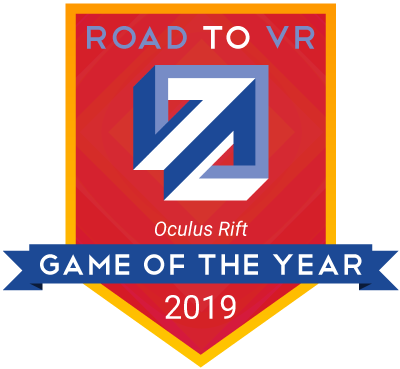


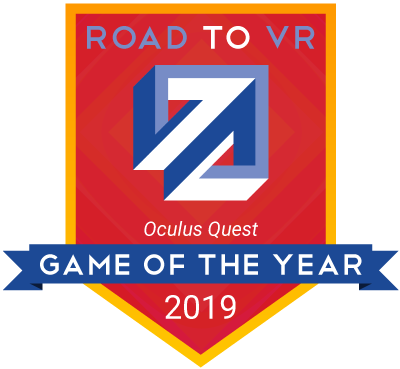


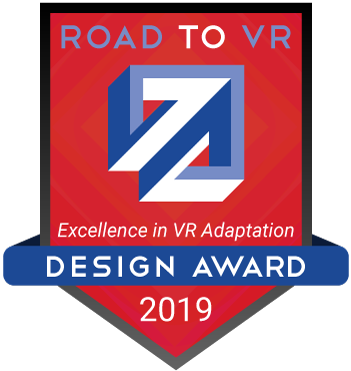

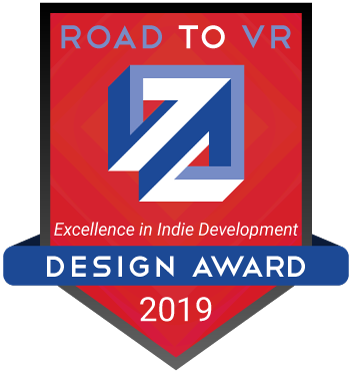

No comments:
Post a Comment